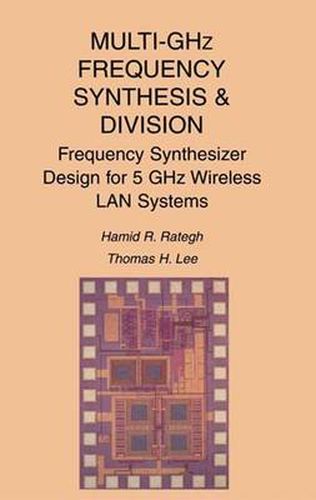Readings Newsletter
Become a Readings Member to make your shopping experience even easier.
Sign in or sign up for free!
You’re not far away from qualifying for FREE standard shipping within Australia
You’ve qualified for FREE standard shipping within Australia
The cart is loading…






This title is printed to order. This book may have been self-published. If so, we cannot guarantee the quality of the content. In the main most books will have gone through the editing process however some may not. We therefore suggest that you be aware of this before ordering this book. If in doubt check either the author or publisher’s details as we are unable to accept any returns unless they are faulty. Please contact us if you have any questions.
In the past 10 years extensive effort has been dedicated to commercial wireless local area network (WLAN) systems. Despite all these efforts, however, none of the existing systems has been successful, mainly due to their low data rates. The increasing demand for WLAN systems that can support data rates in excess of 20 Mb/s enticed the FCC to create an unlicensed national information infrastructure (U-NII) band at 5 GHz. This frequency band provides 300 MHz of spectrum in two segments: a 200 MHz(5.15-5.35 GHz) and a 100 MHz (5.725-5.825 GHz) frequency band. This newly released spectrum, and the fast trend of CMOS scaling, provide an opportunity to design WLAN systems with high data rate and low cost. One of the existing standards at 5 GHz is the European high performance radio LAN (HIPERLAN) standard that supports data rates as high as 20 Mb/s. One of the main building blocks of each wireless system is the f- quency synthesizer. Phase-locked loops (PLLs) are universally used to design radio frequency synthesizers. Reducing the power consumption of the frequency dividers of a PLL has always been a challenge. In this book, we introduce an alternative solution for conventional flipflop based xiv MULTI-GHZ FREQUENCY SYNTHESIS & DIVISION frequency dividers. An injection-locked frequency divider (ILFD) takes advantage of the narrowband nature of the wireless systems and employs resonators to trade off bandwidth for power.
$9.00 standard shipping within Australia
FREE standard shipping within Australia for orders over $100.00
Express & International shipping calculated at checkout
Stock availability can be subject to change without notice. We recommend calling the shop or contacting our online team to check availability of low stock items. Please see our Shopping Online page for more details.
This title is printed to order. This book may have been self-published. If so, we cannot guarantee the quality of the content. In the main most books will have gone through the editing process however some may not. We therefore suggest that you be aware of this before ordering this book. If in doubt check either the author or publisher’s details as we are unable to accept any returns unless they are faulty. Please contact us if you have any questions.
In the past 10 years extensive effort has been dedicated to commercial wireless local area network (WLAN) systems. Despite all these efforts, however, none of the existing systems has been successful, mainly due to their low data rates. The increasing demand for WLAN systems that can support data rates in excess of 20 Mb/s enticed the FCC to create an unlicensed national information infrastructure (U-NII) band at 5 GHz. This frequency band provides 300 MHz of spectrum in two segments: a 200 MHz(5.15-5.35 GHz) and a 100 MHz (5.725-5.825 GHz) frequency band. This newly released spectrum, and the fast trend of CMOS scaling, provide an opportunity to design WLAN systems with high data rate and low cost. One of the existing standards at 5 GHz is the European high performance radio LAN (HIPERLAN) standard that supports data rates as high as 20 Mb/s. One of the main building blocks of each wireless system is the f- quency synthesizer. Phase-locked loops (PLLs) are universally used to design radio frequency synthesizers. Reducing the power consumption of the frequency dividers of a PLL has always been a challenge. In this book, we introduce an alternative solution for conventional flipflop based xiv MULTI-GHZ FREQUENCY SYNTHESIS & DIVISION frequency dividers. An injection-locked frequency divider (ILFD) takes advantage of the narrowband nature of the wireless systems and employs resonators to trade off bandwidth for power.